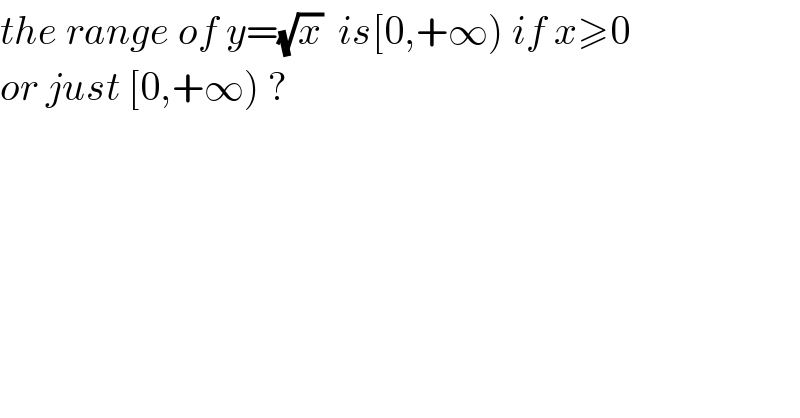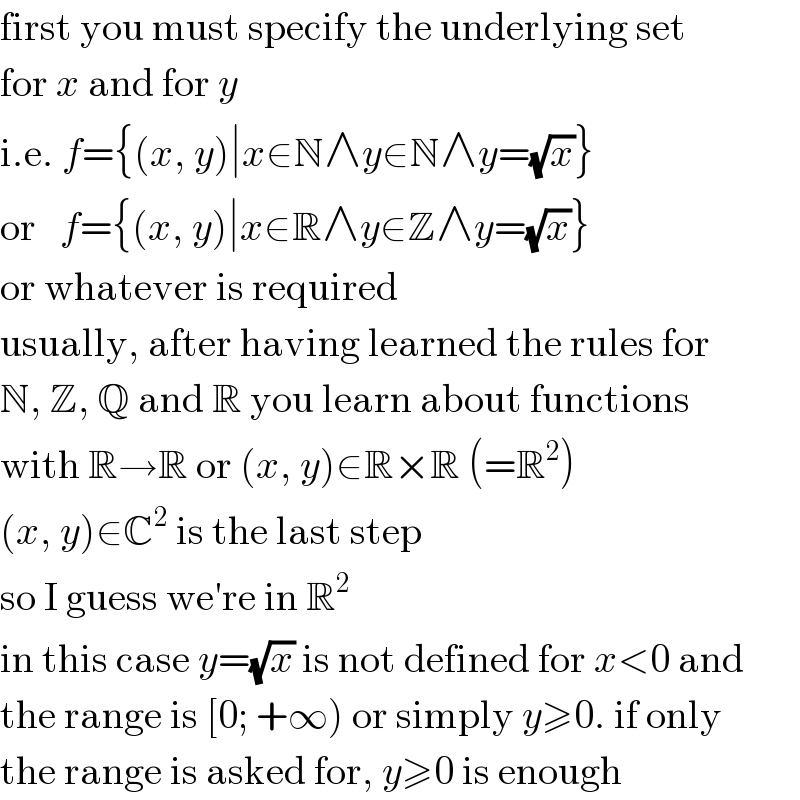
Question and Answers Forum
Question Number 90457 by M±th+et£s last updated on 23/Apr/20

Commented by MJS last updated on 24/Apr/20
![talking of “definition” and “range” makes no sense for x∉R usually. y=(√x) is defined for x≥0 and its range is [0; +∞) for x∈C we get different kinds of problems [try to solve −1=(√x)]](Q90518.png)
Commented by M±th+et£s last updated on 24/Apr/20

Commented by MJS last updated on 24/Apr/20

Commented by MJS last updated on 24/Apr/20

Commented by M±th+et£s last updated on 24/Apr/20

